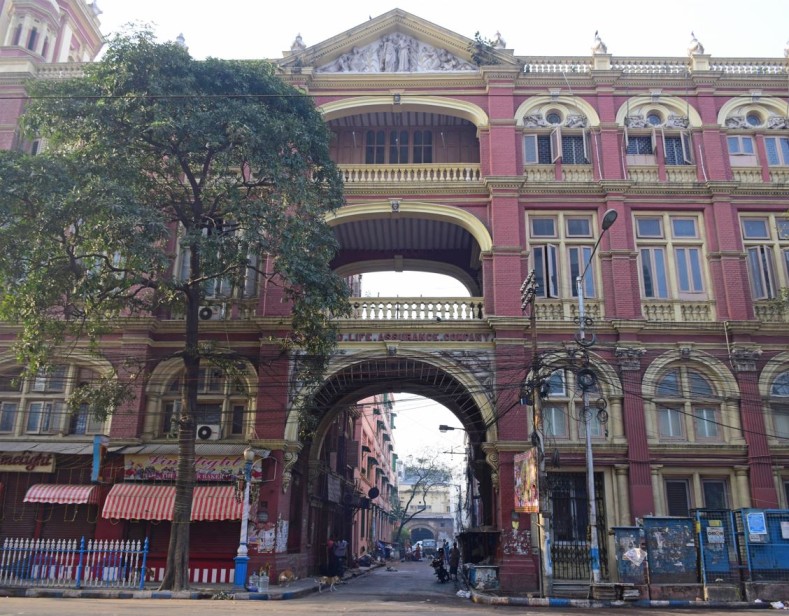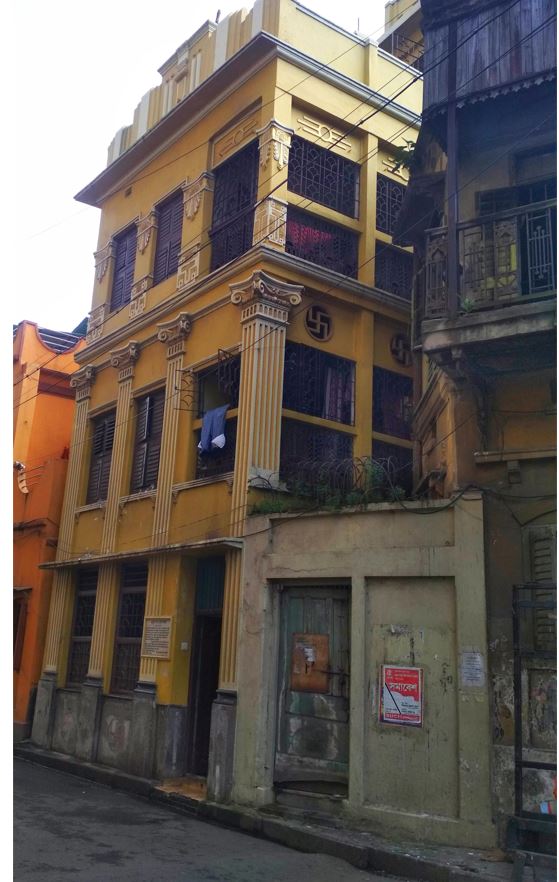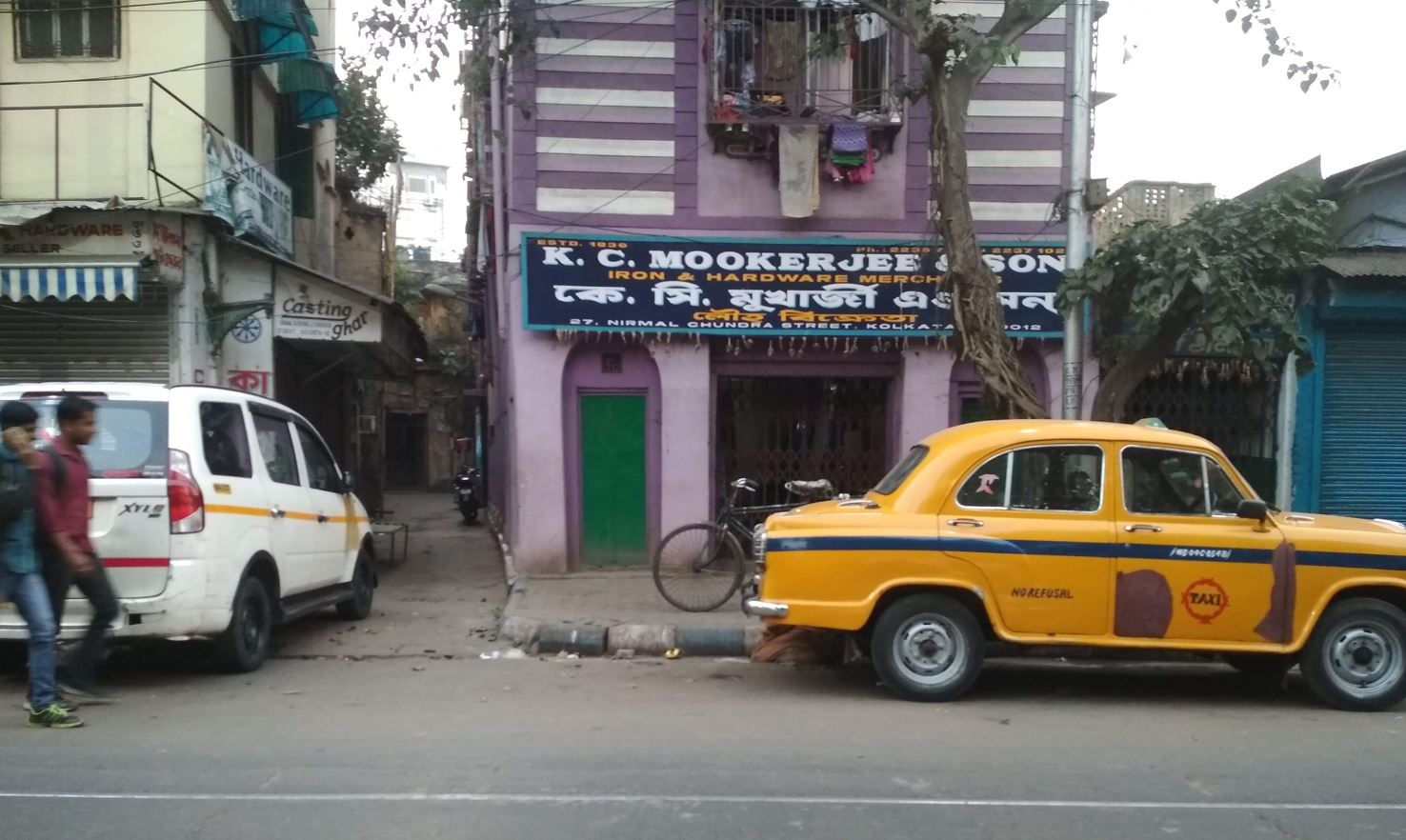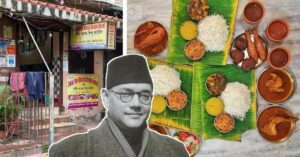The Indians Who Pulled Off the ‘Greatest Daylight Robbery’ That Shook the British Raj
The arms from the forgotten Rodda Arms Heist fueled rebellions such as Hindustan Republican Association (HRA), who conducted the Kakori train robbery in 1925, and the Chittagong Arms heist in 1930.

On 21 July 1916, the Marwari community of Barabazar was surprised to see a small group of police conducting raids at the house of the Birla family. It was unthinkable because the Marwaris were loyal to the British. The police were looking for Ghanshyam Das Birla alias GD Birla, who was 22 years old back then. Luckily, he was not present at home but within hours, Hanuman Prasad Poddar along with his friends Fulchand Chowdhury, Jawala Prasad Kanoria and Onkarmal Saraf were arrested. These people were rumoured to be involved in looting the Dalhousie Square area two years ago.
Hanuman, who later became one of the founders of the famous Gita Press, helped the Bengali revolutionaries to smuggle these weapons to different revolutionary organisations under the guise of an organisation called ‘Marwari Sahayak Samiti’. A box of bullets was also kept in GD Birla’s house for some time. The Marwari community of Kolkata strongly condemned this incident and sort of expelled the culprits from the Marwari society.
But what exactly was the case of looting of weapons? How did the Marwaris get involved with the Bengalis in this matter?
In the pages of the history of the armed revolution of Bengal, this incident is recorded as the Rodda Arms Heist, which took place on 26 August 1914. The looted weapons were actively used in the Ghadar Mutiny in 1915. The use of these guns is also directly connected with other encounters like Bagha Jatin’s final encounter in the banks of Buribalam River with the British Army, the shootout at Dhaka’s Kalta Bazar where revolutionary Nalini Bagchi and Tarini Majumdar laid their lives after killing a Head constable and seriously injuring one sub-inspector.
The Sedition report of 1918 (Page 44) says “the pistols so distributed were used in 54 cases of dacoity or murder or attempts at dacoity and murder subsequent to August 1914”. Some books mention that at least one of these looted weapons was passed on to the Hindustan Republican Association (HRA), who conducted the Kakori train robbery in 1925, and at least one was used in the Chittagong Arms heist in 1930.
Most of the newspapers of the time printed this incident with importance. The Statesman called the robbery ‘The Greatest Daylight Robbery’.
Background of Rodda Arms Robbery

After the partition of Bengal in 1905, the armed movement in the state gathered pace. There were as many as three political murders by the revolutionaries between 1908 and 1910. Finally, a bomb was hurled at Lord Hardinge in Open Street of New Delhi in broad daylight in the year 1911.
Rashbehari Bose wanted a massive armed revolution pan India, which required a large stockpile of weapons. Jatindranath Mukherjee (aka Bagha Jatin) with the help of Narendranath Bhattacharya made a plan to bring three shiploads of weapons from Germany to this country. Meanwhile, in Kolkata, a daring plan of an armed heist was in the making.
Two revolutionary groups behind the robbery

Rodda Arms Heist was the result of the collusion of two revolutionary groups. One of these groups was the Attonnoty Samiti of Kolkata and the other was the Dhaka Mukti Sangha, later renamed as ‘Bengal Volunteers’.
The backbone of Attomnnati Samiti was Bipin Bihari Ganguly. He was closely associated with Jatindra Nath Mukhopadhyay, who also had asked him to arrange for arms. The main base of Attonnoty Samiti was at Anukul Mukherjee’s house at 39 Malanga Lane near the present Hind Cinema. Girindra Nath Banerjee was one of the main think tanks of the Samiti. He stayed with his brother Narendra at Malanga Lane as well.
The Dhaka Mukti Sangha was founded in 1902 on the initiative of Hem Chandra Ghosh and Ullaskar Dutt. One of the members of this group was Shrish Chandra Pal. In the year 1906, he moved to Calcutta under the direction of Hem Chandra Ghosh. The aim was to be involved in various revolutionary activities with the Attonnoty Samiti. The first joint action between the two groups was the assassination of inspector Nandalal Banerjee by Srish Chandra Pal accompanied by Ranen Ganguly of the Samiti on 9 November 1906.
Bipin had a close friend named Kalidas Mukherjee who was employed at a prominent British-owned gun store. The office was at Red Cross place and the godown was situated in Vansittart Row in Calcutta.
With the help of Anukul, Bipin sent a youth named Shrish Mitra (alias Habu) to Kalidas Mukherjee to get employed at Rodda & Co. A member of the Samiti named Kalidas Basu gave Shrish Mitra basic education, who gave a favourable impression to F B Prike of Rodda & Co. Habu was immediately hired. He gained their trust and was promoted to the post of “Jetty Clearing Clerk”.
Rodda Arms Heist

Somewhere around the beginning of June 1914, the British Government decided to place an order of 50 Mauser C96 semi-automatic pistols and 50,000 7.63×25mm Mauser cartridges with Rodda & Co. Mauser C96 was a long barrel gun with the box magazine located in front of the trigger with a round wooden handle along with a wooden shoulder stock. The shoulder stock provided the pistol with the stability of a short-barreled rifle.
Shrish Mitra promptly informed Anukul of this order after meeting him at Girindra Banerjee’s house. Afterwards, a secret meeting was held at Chatawala Gali near Lalbazar involving members of Attommnnati Samiti, Dhaka Mukti Sangha, Jugantar Party and Barisal Party.
Here, Shrish Chandra Paul informed that he plans to loot the entire consignment of arms from the British Police in broad daylight. The consignment of guns was already unloaded from the ship named ‘Tactician’ and was awaiting permission for release from the customs house.
Soon after its release, these guns with other arms would be transported using six bullock carts to the godown of Rodda & Company at Vansittart Row located just about 500 metres from the customs house. Shrish Chandra Paul had proposed that if a team intercepts the total consignment on the way to its delivery to the godown, this huge lot of arms could be used for revolutionary activities.
Members from Jugantar Party and Barisal Party, including Narendranath Bhattacharya, opposed this idea and left the meeting. However, members of Attommnnati Samiti and Dhaka Mukti Sangha supported the idea and Shrish Chandra Paul laid out his plan.
On 26 August 1914, the heist was carried out as planned. Anukul Mukherjee had pre-arranged a cart driven by a stout upcountry bullock. The seventh bullock cart reached a bit late as if it was part of the original carriages. One of the revolutionaries named Haridas Datta from Rangpur, a member of Dhaka Mukti Sangha, dressed as a Garwan or cart Driver led the cart to the customs house.
The customs house was located at Dalhousie Square at the very place where the building of the Reserve Bank of India stands now. Shrish Mitra uploaded the entire consignment of Mauser pistols, shoulder stock and cartridges on this seventh bullock cart in his official capacity. Haridas Datta drove the cart confidently like a Garwan from the customs house. Shrish Mitra walked in front of all the bullock carts. As the bullock cart tagged along with the other six carts, Shrish Chandra Paul came out from the shadows along with another revolutionary Khagen Das and started walking on both sides of the cart, pretending to be employees of Rodda and Company.

At the entrance to the Vansittart row, Shrish Chandra Paul and the six bullock carts took a right turn and proceeded towards the godown of Rodda & Co. However, instead of turning right, Haridas Datta drove the cart straight on the main road bypassing Vansittart row. The plan was to transport the weapons to the house of Bhujanga Bhusan Dhur, a student pursuing a Master’s degree from Presidency University (Then College). Meanwhile, Shrish Mitra also joined them after leaving office on the pretext of locating the seventh bullock cart.
To cover their tracks they first unloaded the boxes of guns and ammunition in front of an iron yard, which belonged to Kanti Ganguly whose son Lalbihari was a friend of Anukul, on Nirmal Chandra Street. Many members of the revolutionaries had already reached there. A car of Kalidas Basu was supposed to arrive there to carry the boxes to their destination. However, the car failed to arrive and in the end, the revolutionaries had to hire two hackney carriages to transport the weapons to the house of Bhujanga Bhusan Dhur at Jelia Para Lane.
After that, Haridas Datta took a different name ‘Kunja’ and went into hiding. Shrish Mitra alias Habu left Kolkata for Rangpur.
Several Steel trunks were being filled up with cartridges and Mauser pistols, which were to be handed over to different groups of revolutionaries. The empty wooden boxes and packing papers were burned overnight.
Hanuman Poddar helped to offload some boxes in the Burrabazar area, which included the gaddi (business establishment) of Banarsi Prasad Jhunjhunwala on Chitpur Road, two boxes to Omkarmal Saraf’s house at Sutapatti. Prabhudayal Himmatsingka helped transfer two boxes to Poddar’s business establishment from Saraf’s house. A cache of arms was then kept at the house of GD Birla.
Aftermath of the Heist

Shrish Mitra had gained so much trust among his employers of Rodda & Co that nobody suspected anything when he went in search of the seventh bullock cart and did not return. It was not till three days later that Mr Prike discovered the theft. On receiving the report of the robbery, the head of the Detective Department, Sir Charles Augustus Tegar was immediately given the charge to solve the case.
If the car of Kalidas Basu had reached on time, it would have been very difficult to trace the weapons. But unfortunately for the revolutionaries, they had employed hackney carriages to transport the packing boxes and the police tracked the route.
There were several arrests made including Anukul, Datta, Kalidas and Bhujnaga Bhusan Dhur. Except for Anukul, the rest were sentenced to jail for not more than two years.
The significance of the heist can be understood from a statement made in the report of 1918 by the President of the Sedition Committee S.A.T. Rowlatt. On Page 56 of the report, he mentions “It may indeed be safely said that few if any revolutionary outrage has taken place in Bengal since August 1914 in which Mauser Pistols stolen from Rodda & Co. have not been used.”
As per Folio No 757/17 and 1847/17 in the I B Records of the Government of India, details of 27 successful cases of murder and robbery using these Mauser Pistols post-1914 August till June 1918 is recorded.
Missing hero of the Heist
The Rodda Arms Heist was one of the most successful arms heists of colonial India, considering the facts that the guns and the bullets were successfully stolen and a majority of them were used for revolutionary activities. Not a single bullet was fired to take over the arms and none of the revolutionaries received the death penalty or life imprisonment.
The British police could not build up a proper case because Shrish Mitra remained untraceable till the end. Initially, Shrish Mitra stayed at Dr Bardhan’s house at Rangpur. He was shifted to the Rava Tribal area in the Goyalapara district of Assam from where he simply vanished.
As a reminder of the Rodda Arms Heist, Gopal Mukherjee, who was Anukul’s nephew, erected a memorial on Ganesh Chandra Avenue on behalf of a local committee ‘Jatio Artotran Samiti’. Here, four busts of Bipin Bihari Ganguly, Anukul Mukherjee, Girindra Nath Banerjee and Haridas Datta stand to date.
Even today on 26 August, only members of the local committee pay their respect to these brave sons of India, while the majority of city folk have forgotten about this chapter of the Indian Freedom Movement.
(References :-
A. “Malanga r Habu O Rodda Company r Astralunthan” ( Habu of Malanga and the Rodda Arms Heist) by Satyendra Nath Gangopadhyay 1978
B. “Two Great Revolutionaries” by Uma Mukherjee, (Page 65 to Page 75),
C. “Bharate Sashastra Biplab” ( Armed rebellion in India) by Bhupendra Kishore Rakshit Ray , Page 131 -144) , 1960
D. Sedition Committee 1918, Report, Calcutta, From the Hon’ble Mr. Justice S. A. T. ROWLATT, President, Sedition Committee, Superintendent Government Printing, India (1918)
E. The judgment of the case Kali Das Basu And Ors. vs Emperor on 30 August 1915 (https://indiankanoon.org/doc/568638/)
F. Subhash did not return to his abode (Subash Ghore fere Nai) by Shyamal Basu, Reflect Publication, 1973
G. The Illustrated Encyclopedia of Handguns by A.B. Zhuk, Greenhill Books, 1995
H. Mauser Rifles and Pistols by W. H. B. Smith, The Military Service Publishing Company, 1946
I. The Mauser C96 Explained by Gurad Henrotin, G. Henrotin & H & L Publishing (Belgium), 2002
J. I B Records of the Government of India
K. Gita Press and the Making of Hindu India by Akshaya Mukul, Harper Collins -2015 – Page 40 -44)
(Written by Amitabha Gupta; Edited by Yoshita Rao)

Similar Story

Netaji Bose’s Favourite Eatery Has Been Serving Traditional Delicacies for Over 100 Years
The Swadhin Bharat Hindu Hotel in Kolkata, started by Mangobindo Panda, is a century-old pice hotel where Indian freedom fighters like Netaji Subhas Chandra Bose would enjoy Bengali delicacies.
Read more >
If you found our stories insightful, informative, or even just enjoyable, we invite you to consider making a voluntary payment to support the work we do at The Better India. Your contribution helps us continue producing quality content that educates, inspires, and drives positive change.
Choose one of the payment options below for your contribution-
By paying for the stories you value, you directly contribute to sustaining our efforts focused on making a difference in the world. Together, let's ensure that impactful stories continue to be told and shared, enriching lives and communities alike.
Thank you for your support. Here are some frequently asked questions you might find helpful to know why you are contributing?


This story made me
-
97
-
121
-
89
-
167












